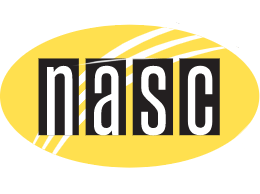Natural Remedies For Cushing’s Disease In Dogs

Learning that your dog has a serious disease can be a huge emotional blow. But with the right information, you can do everything in your power to help your dog. Keep reading to learn about Cushing’s disease and what natural remedies can benefit your dog.
What is Cushing’s Disease in Dogs?
Cushing’s disease, also known as hyperadrenocorticism, causes your dog’s adrenal glands to make too much of the stress hormone, cortisol. Your dog needs it for things like regulating body weight, fighting infections, and controlling blood sugar levels.
But too much of this stress hormone can damage your dog’s health … harming the kidneys and increasing the risk of diabetes. This disease happens most often in older dogs (over 8 years old), so keep an eye out for symptoms if you have a senior dog … or one of the breeds that are more prone to Cushing’s, like Poodles Dachshunds, Boxers, and various terrier breeds (1).
Getting right to the point, here are some natural ways to help your dog with Cushing’s. But keep reading after that to learn about causes, symptoms, diagnosis, and conventional treatments for Cushing’s.
Natural Remedies For Cushing’s Disease
Conventional medications and surgery for Cushing’s carry some risks of complications and side effects (you’ll read about these a bit later). So here are some natural therapies you can use to help your dog with Cushing’s Disease. You’ll want to ask a holistic veterinarian for help. Cushing’s is a serious condition that requires expert management.
Feed A Low Fat Diet
Excess cortisol in the blood increases the level of fat and cholesterol in blood as well. This means you should feed a lower-fat diet to counteract this effect of Cushing’s disease
Be sure your dog is getting enough high-quality protein to prevent muscle wasting. Feed a raw, whole food diet that includes vegetables and fruits. Give your dog organ meats or glandular supplements. Feeding a certain organ or gland can support the function of the matching organ in your dog.
RELATED: Find out why your dog needs more organ meat …
Give Herbs To Support Adrenal Function
Many western and Chinese herbs can help a dog with Cushing’s. Herbs like dandelion root, burdock root, nettle, astragalus, and milk thistle are thought to be helpful for adrenal gland function. There are also combination herbal remedies (especially in Chinese medicine) that address adrenal function.
Make sure you don’t use licorice or borage leaf, which are thought to stimulate adrenal activity. Always ask an herbalist or holistic vet about the proper dosage and properties of different herbs before giving them to your dog.
RELATED: Read which herbs are best to cleanse your dog …
Add Supplements
Some have found that melatonin and lignans help manage Cushing’s disease in dogs. Melatonin helps regulate hormones and maintain circadian rhythms. Lignans mimic phytoestrogen in the body, which may reduce estrogen production in the adrenal gland.
Try Acupuncture
Acupuncture is known to reduce inflammation and help regulate the endocrine system, so could be a good complementary treatment for a dog with Cushing’s.
Now that you have some ideas on how to manage Cushing’s disease in your dog with natural remedies, here’s some more background on the condition.
What Causes Cushing’s Disease in Dogs?
There are three causes of Cushing’s in dogs:
Pituitary Gland Tumor
The pituitary is a pea-sized gland at the base of your dog’s brain. It’s responsible for controlling metabolism, growth, and many other essential body functions through the release of hormones.
The pituitary gland releases a hormone called ACTH which tells the adrenal glands to make cortisol. When there’s a pituitary tumor, the gland may create too much ACTH, which in turn leads to excess cortisol levels … Pituitary-dependent is the most common type of Cushing’s disease in dogs.
Adrenal Gland Tumor
The adrenal glands sit right next to the kidneys. An adrenal gland tumor causes overproduction of cortisol.
Steroid-induced (Iatrogenic) Cushing’s Syndrome
Latrogenic cushing’s happens due to too much steroid-based medication (like dexamethasone or drops for ear and eye infections). In this case, Cushing’s symptoms should go away once the drugs are stopped. Check with your veterinarian about how to safely wean your dog off medications.
Symptoms of Cushing’s Disease in Dogs
Cushing’s can be tricky to diagnose because the symptoms are shared with many other illnesses. If you notice any of the following clinical signs, talk to your veterinarian.
- More tired than usual
- Pot-bellied appearance
- Frequent skin infections
- Hungrier or thirstier than usual
- Peeing more than usual, including having accidents indoors
- Excessive panting
- Loss of muscle mass and resulting weakness
- Hair loss
How Cushing’s Disease Is Diagnosed
If your vet suspects Cushing’s, she’ll do a physical exam and run a few tests to confirm the diagnosis, including blood tests and urine culture. Imaging tests such as abdominal ultrasound (2) or CT scans can also be useful for spotting tumors on the adrenal and pituitary glands, respectively. MRI (magnetic resonance imaging) is an effective diagnostic test because your vet can see abnormalities in your dog’s adrenal glands … but it’s expensive …
Other adrenal function tests your vet may do to confirm Cushing’s include …
- LDDS – Low Dose Dexamethasone Suppression test – this is vets’ preferred test. Your dog will have to spend 8 hours at the vet clinic.
- ACTH stimulation test, a popular test that can often yield false negatives.
A 2012 position paper by the American College of Veterinary Internal Medicine (ACVIM) points out that none of these screening tests are perfect (3). And research at Purdue University states “The limitations of screening tests, particularly in the presence of nonadrenal diseases, cannot be overemphasized.” (4)
Treatments For Cushing’s Disease in Dogs
The conventional treatments for Cushing’s disease in dogs are:
- Surgical removal of tumors
- Radiation to shrink tumors
- Medications to regulate cortisol production
Side Effects Of Cushing’s Disease Treatments
Before you decide on a treatment option for Cushing’s, here’s some information about these treatments.
Surgical Removal Of Tumors
Surgery brings risk of complications like infection, recurrence of the tumor, and the need to give follow-up medications. Pituitary tumors involve a trickier surgery at the base of the brain, so are harder to remove than adrenal tumors.
Radiation Therapy
Radiation can be successful with pituitary tumors that cause neurological symptoms like seizures or anorexia. The therapy can cause side effects like fatigue, nausea, diarrhea, skin issues and hair loss.
Cushing’s Medication
These treatments are meant to either reduce the levels of cortisol in the blood to normal levels or to shrink the size of pituitary or adrenal tumors. The most commonly prescribed drugs for Cushing’s disease are Mitotane and Trilostane (5)
Mitotane is a human chemotherapy drug that is meant to shrink adrenal or pituitary tumors. Side effects of this include low blood sugar, vomiting, depression, and neurological issues such as weakness and seizures. The FDA warns that off-label use of this drug (not FDA approved for veterinary use) can have severe side effects (6).
Trilostane has side effects that research from University of Guelph shows include dehydration, high blood pressure, blood clotting, express protein in urine. low sodium, high potassium, and weakness (7)
Your veterinarian will recommend careful monitoring of your dog when he’s on these medications. You’ll need to pay very close attention to side effects and how much your dog is eating and drinking.
The treatment you choose for your dog will depend on the cause of his Cushing’s disease. Be sure to discuss with your holistic veterinarian what option or combination of options will give your dog the best chance of success.
Find us in a store near you
Never miss out
Need help? Chat with us





